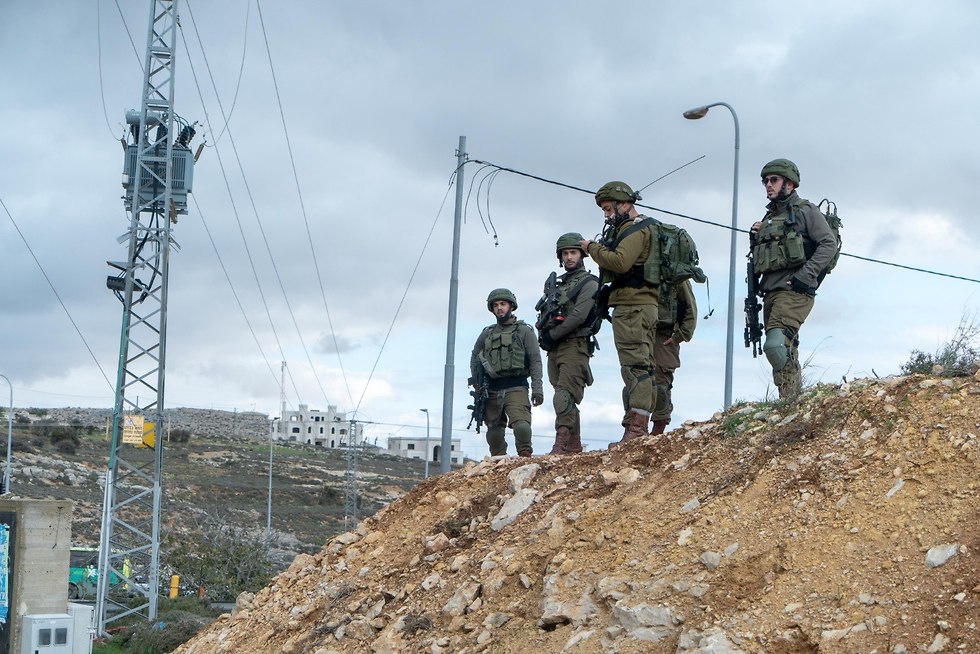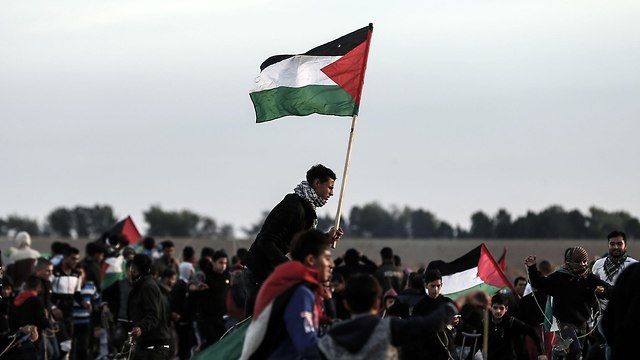Op-ed: Israeli security forces must take several immediate steps to halt the deadly wave of terrorism in the West Bank, including speeding up questioning of suspects to gather intel on planned attacks and increasing military presence in the territories. The Palestinian despair could be addressed with a political-economical initiative.
The killing of the terrorists who carried out the Barkan and Ofra shootings, and the capture of many of their accomplices within a relatively short time, would have, under normal circumstances, created deterrence in the territories. But the unrest in Judea and Samaria and Jerusalem, which has increasingly escalated over the past few months, has already picked up momentum of painful terror attacks.
Israeli defense officials estimated that this violent wave of attacks will continue, and perhaps even worsen over the coming months. The events of the past two days confirm this assessment.

The IDF, the Shin Bet and the Israel Police will have to invest massive forces and a great intelligence effort in the West Bank to stop the situation from deteriorating further: from “lone wolf” terrorists who carry out stabbings or car-rammings inspired by successful shooting attacks, to “local terror cells” made up of young Palestinians, from the same family or village, who carry out shooting attacks on IDF soldiers patrolling roads, as well as organized terror attacks, directed by outside elements (mostly Hamas) using weapons and explosives and trying to abduct soldiers.
The Jewish settlers in the territories will have to take extra precautions in the foreseeable future. A wave of violence must be broken before it becomes a tsunami. The main threat right now is from “lone wolf” terrorists and drive-by shootings, likely perpetrated by “local cells.”
To contain this escalation, security forces will have to immediately take the following steps:
• The IDF will have to deploy additional forces and increase its presence in the West Bank, especially in areas likely to be targeted, such as roads used by Jewish settlers that pass through Palestinian villages, bus stations and shopping centers.
IDF activity in the West Bank must be done in accordance with urban warfare rules: operate behind cover as much as possible and travel in armored vehicles. Unannounced checkpoints on roads have already proven themselves as an effective measure against drive-by shootings.

At the same time, it’s important that the IDF makes a significant effort not to disrupt the daily life or endanger the livelihood of Palestinians who are not involved in terrorism, so others won’t be pushed to joining the circle of violence.
• The Shin Bet must quickly question all suspects and accomplices arrested in recent days to gain intelligence that could be used to thwart terror attacks. It was the hard work of dozens of Shin Bet personnel in a variety of intelligence activities, including the use of cyber measures and AI, which helped locate and capture the murderers who carried out the Barkan and Ofra attacks.
Now is the time to focus on local cells, likely inspired by Hamas and Islamic Jihad, which send money and instructions to its agents in the West Bank from Gaza, Lebanon and Turkey. At the head of these operations is Hamas’s Saleh al-Arouri.
• The IDF and Shin Bet need to do everything possible to maintain the security coordination with the Palestinian security forces, so in the future the Palestinians might help or at the very least not get in the way of Israeli operations to foil attacks.
The real reason for the recent outbreak of violence in the West Bank is the younger generation’s frustration in light of what they see as a dead end, with no future or hope, in all areas of life—which Hamas takes advantage of.

Hamas has a clear motive: to create a wave of terrorism in the West Bank to remedy the damage to its image after it agreed to take Qatari money and in return end the war of attrition it has waged against Israel since March.
It’s also time to admit that the months of rioting on the Gaza Border also eroded the IDF and the Shin Bet’s deterrence in the West Bank. This deterrence was very effective in curbing violence.
In light of this, Israel’s security goal should now be to weaken Hamas, while its political-financial goal should be arousing some kind of hope in the younger Palestinian generation. Israel needn’t wait for the US and its peace initiative, but rather propose to Palestinian President Mahmoud Abbas projects that hold economic benefits he cannot refuse.
This course of action has already proved itself in the Gaza Strip. Egyptian mediators have made progress in negotiations with Hamas, Islamic Jihad and other Palestinian factions in an effort to achieve calm and improve the humanitarian situation in the strip. There is likely already a clear outline for an agreement accepted on all sides, including Israel
This outline includes the reimplementation of the Protective Edge understandings—12 hours of electricity per day, salaries for Hamas officials, and a 12 nautical miles fishing zone. The agreement does not, at present, include the Israel’s MIAs and POWs in Gaza, but the Israeli government has made it clear that there will be no large-scale rehabilitation in Gaza (including a sea port, among other projects), before a solution for this matter is found. If this agreement goes into effect in the coming days, it could have a soothing effect over Gaza that will also be felt in the West Bank.
As reported by Ynetnews
